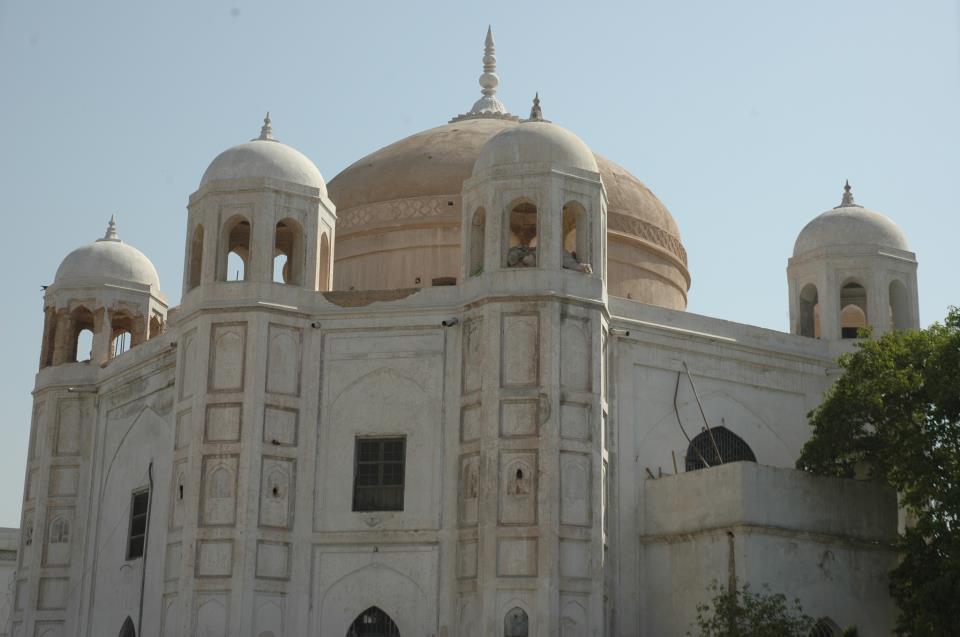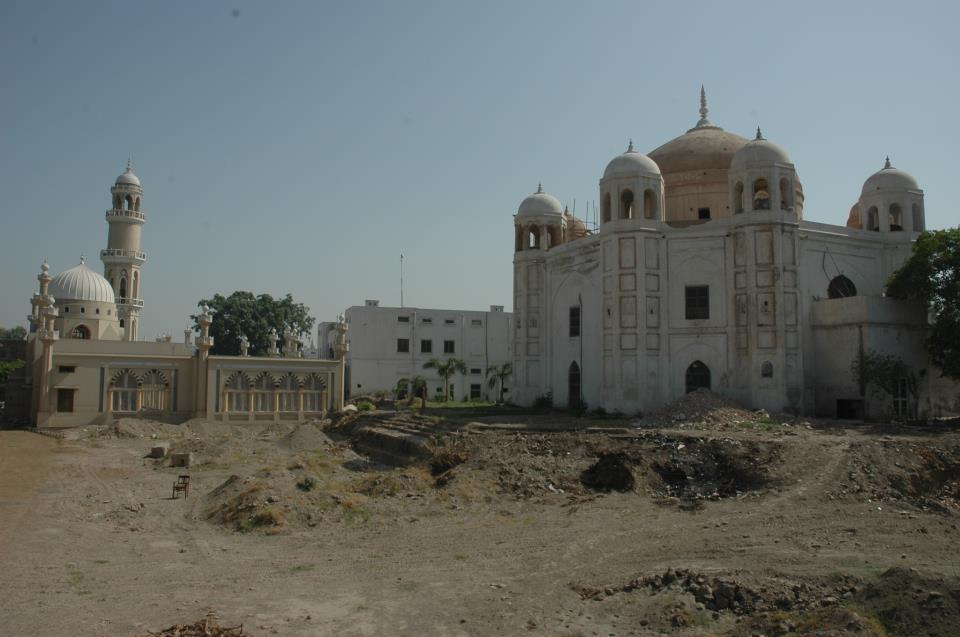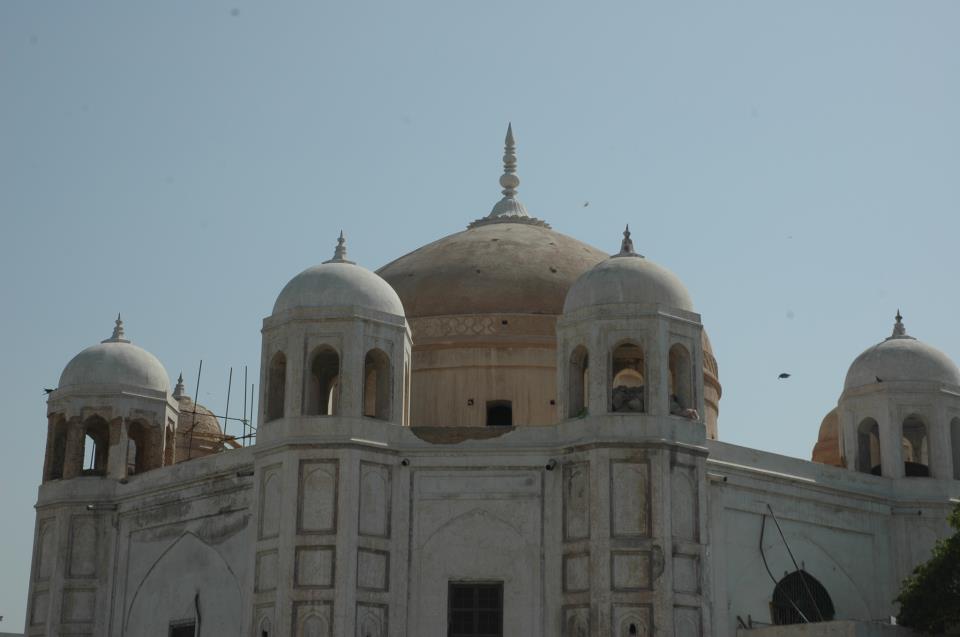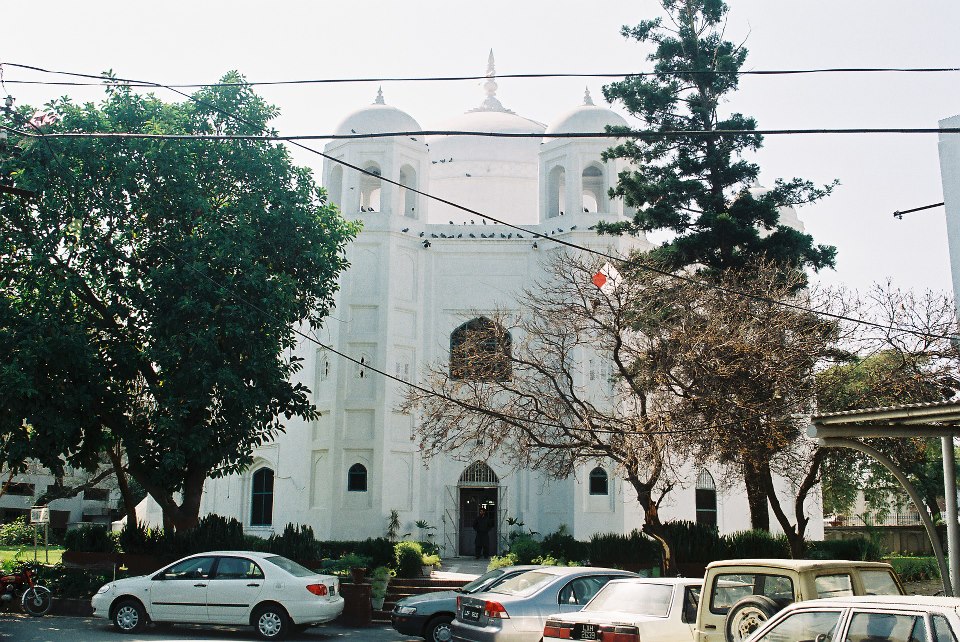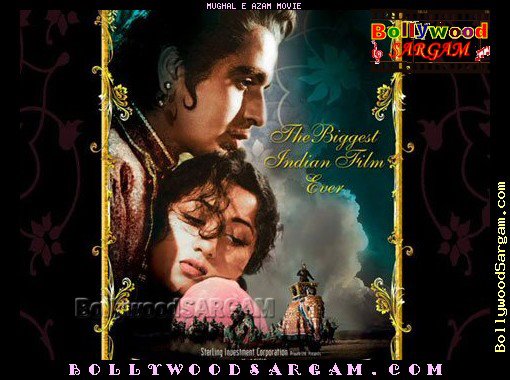
Mudassar Bashir
Anarkali’s name and her story is an unforgettable one. When we look into the pages of history, there are various conflicting accounts of her story. One group says that she was Prince Saleem’s lover and was a pretty slave girl in Emperor Akbar’s court. Her name is variously described as Nadira begum, Sharf un Nisa or Shareef un Nisa. Emperor Akbar never approved of her relationship with Shekhu (Prince Saleem). He could not put down the fire of love that burned in her heart and, in anger, bricked her up in a wall. When Prince Saleem ascended the throne, he erected an elegant mausoleum over her grave.
Another school of historians is of the view that this mausoleum belongs to of Jahangir’s step mother who had a special affinity for him. One distinguished scholar who has researched this is the late Maulana Ilm ud Din Salik. I myself agree with his conclusions. He is of the view that this is the burial place of Jahangir’s own wife.
He has written that the mausoleum was built for Jehangir's wife, who was the daughter of Zain Khan Kokah. She was closer to the emperor than was Nurjahan. If one looks at the books written during the time of Akbar and Jahangir, one finds no mention of a slave girl called Anarkali, who caused a conflict between Akbar and Sheikhu. Tuzk-e-Jahangiri is a well known autobiography of Jehangir. In this book the emperor has written candidly about the events of his life from his childhood to old age in a great deal of detail. At several places in this book he has mentioned his fondness for wine, women and meat. Later, in the times of Shah Jahan, Mohammed Saleh Kamboh wrote Shah Jahan Nama. The incident has not been mentioned anywhere in these books.
Manochi, who was a traveller given to much concoction, has added several anecdotes of his own invention to his books about the Mughals. Even he has not described this incident anywhere in his writings. In the British period there was much talk about it when Imtiaz Ali Taj wrote his play Anarkali. The Mughal court was painted in a different colour in this play. Afterwards, Khan Asif, who was originally a resident of Mochi Gate area Lahore, immortalised this character by making the great movie called Mughl-e-Azam. Madhu Bala played Anarkali in the movie. This turned Anarkali into a legend. The Film itself is became a world classic.
Details of the building
Buildings of Jahangir’s period are well known internationally. Jahangir gave special personal attention to the construction of this tomb.
In line with the eastern side of the dome of the mausoleum, lies the mound slab of the grave with two dates visible on it: 1998 AH (or 1599 CE) and 1024 AH (or 1615 CE). A review of history indicates that the first of these dates corresponds to the date of death of King Jahangir’s wife and the second date is probably the date of inauguration of mausoleum itself. Mausoleum’s building has two floors with a dome in the centre. Both floors had eight doors and around them in a circle, stood as many domed turrets. Each turret had its own door and an oriel (jharoka). The mausoleum’s building was surrounded by a big garden. After the fall of the Mughal Empire, the mausoleum fell into the hands of Sikhs. The plinth of the grave, made of marble stone, was uprooted and shifted to Darbar Sahib. Along with the plinth, the mound-slab of the grave was also excavated from its foundations. It bore dates and poetic inscriptions and this reduced its immediate utility to the minimum. So, for many years it lay abandoned under the sepulchral dome.
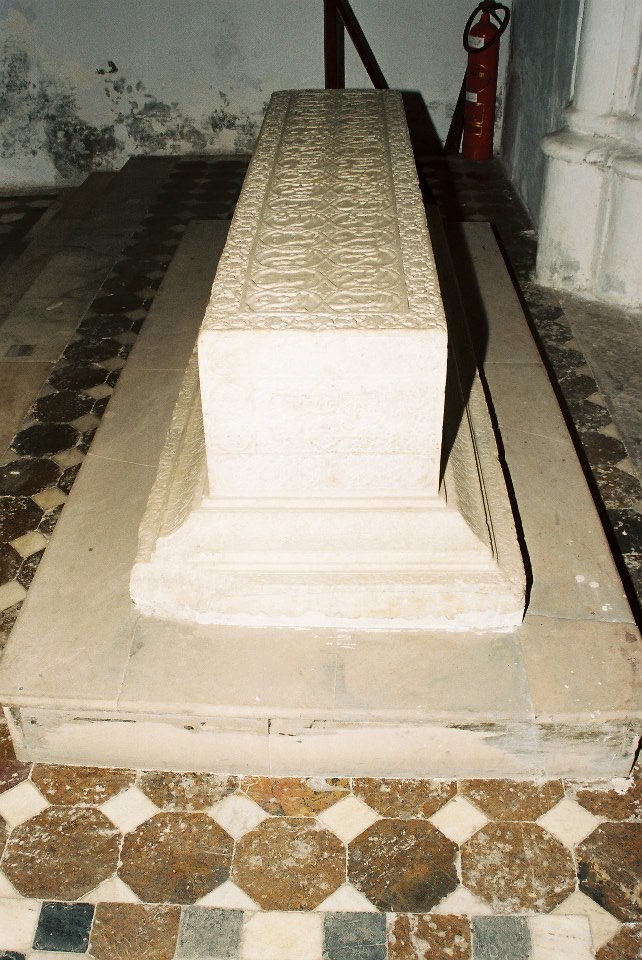
Even worse fate was in store for this mausoleum, as many a time it was put to torch. The brick sellers took apart the boundary wall and pilfered the bricks. After the fall of the Sikhs, the British Raj did not fare much better. The colonial British whitewashed the biggest and most beautiful dome with white paint. This dome had exhibited the most exquisite mosaic work. Later, the colonial British government converted the whole building into a church and christened it St James Church. The basement of the mausoleum, which housed the actual grave, was closed pemanently. The mound-slab, which should have been relocated squarely under the dome was moved to a corner to the east.
To date, the mound slab is at the same place, as nobody has the audacity to move it back to its original place.
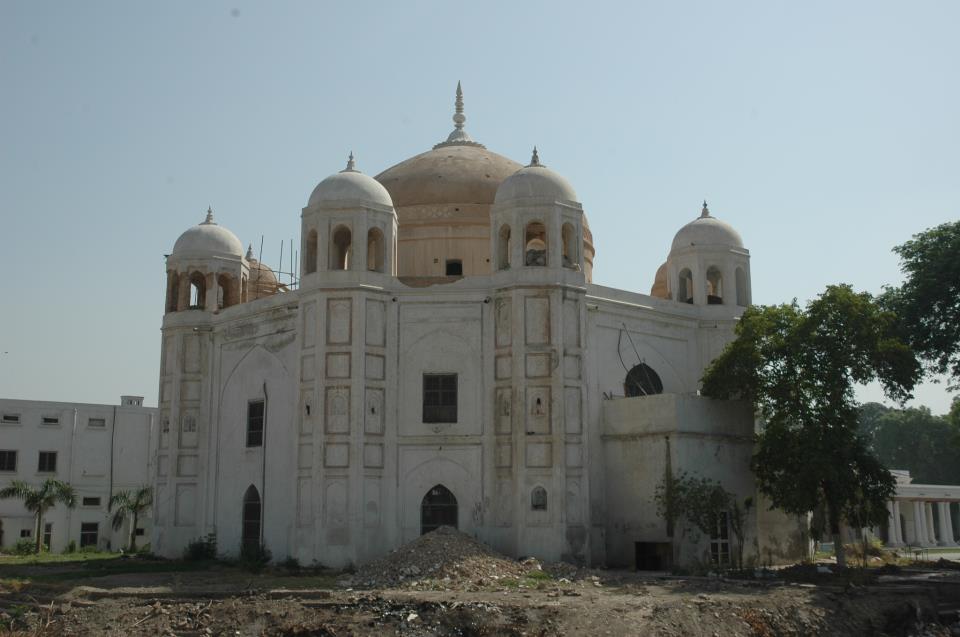
After the partition, this mausoleum was used as the civil secretariat and many new buildings were built in its garden. Kanhayya Lal, in his book ‘Tareekh e Lahore’ (p318), writes thus about this mausoleum:
‘This magnificent mausoleum is made of baked bricks. It is an octagon in shape and each side of the octagon has a door. On the inside, the mausoleum has two storeys. In the centre, it has a magnificent dome. The upper storey has nine windows, seven ventilators and four latticed ventilators. The main dome is in the centre around which are eight smaller cupolas, containing eight side openings each. In the past, it used to have eight portals on the lower and eight on the upper floor. Now only the lower ones remain on which mirror inlaid double doors have been installed. The upper floor portals have been altered. The mausoleum rests on a vast octagonal plinth, elevated to the height of fours steps. The main door for general use is now towards the South. In the Southeastern corner, a small door leads to a separate accommodation which contains the marble mound slab of Anarkali. A stone crucifix is affixed on the main dome.’
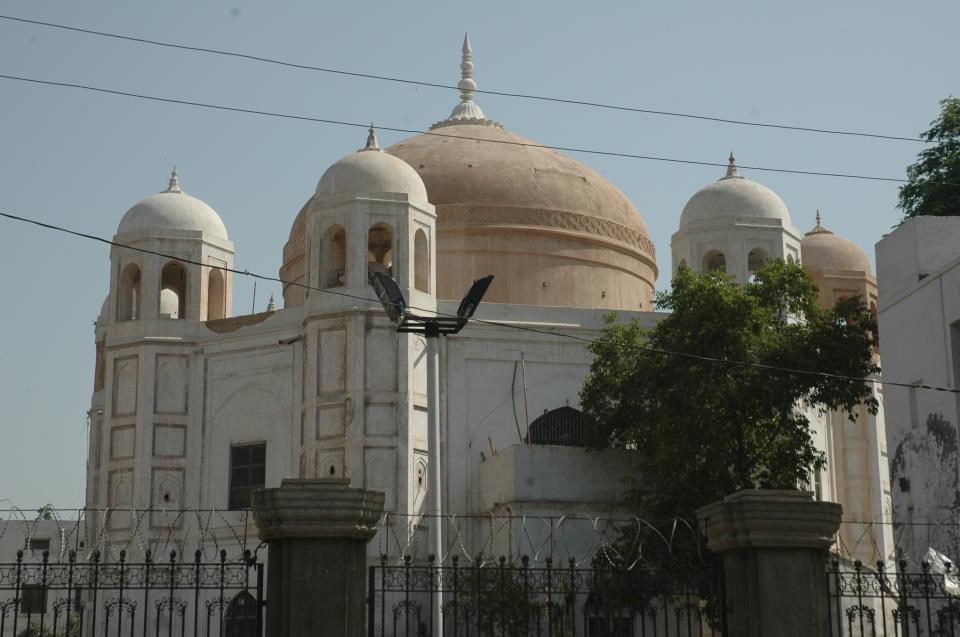
Passing by the Civil Secretariat , one can not even imagine the magnificent mausoleum inside this government building. When you enter the Civil Secretariat from the Lower Mall gate, you will see the white dome of this building towards the western end. Another road off lower Mall road goes down towards Krishan Nagar (Islam Pura). In its beginning on the left side there is another Government building called People’s House. A little ahead is the Government Printing Press building with Chishtia High School across the way. Behind the Printing Press is an old cricket ground called Baba Ground.
Many renowned cricketers have played on this ground. If one looks towards the South from this ground, the whole mausoleum building can be seen. Behind this mausoleum is an old mosque where marble has been used in the dome and sandstone in the minaret. Behind the dome of the mausoleum one can see some old houses in an old residential area. To reach the building of the mausoleum, the door of the Punjab Bank can also be used. In the Civil Secretariat, big cars and big officers remind one of the British colonial era. At one end of the dome, a new door can be seen whereas its old and original doors have been plastered over with mud and limestone. The building of the mausoleum is now used as the official record office. Here, old coins, copies of old writings and pictures have been displayed in glass show cases.
On the eastern corner of the tomb is the grave made of white marble. On this grave ninety names of God are written. All this is written in ‘Khat e Jali’ (Jali Script). Similar writings also exist on the graves of Asif Jah and Jahangir. a Persian verse by Jahangir is written on the casket. This verse reflects pining for the lost love:
تا قیامت شکر گویم کردگار خویش را آه گر من باز بینم رویی یار خویش را
Verse
I will sing Lord’s praises till the end of time
If I could see again the love of my life
The name of ‘Majnoon Saleem Akbar’ is clearly visible underneath God’s names.
The inner building of the tomb is solid beautiful and exuberant as it must have been when it was built. On the western side of the dome two new rooms have been added. Some officers have written history books sitting in these offices but they seem to have been oblivious to the history of the place itself. This tomb is associated with one of the greatest love stories of Lahore. But, it is the bad luck of the inhabitants of this city, that they, not just, do not know anything about this tomb, but have no easy access to it either.The general public knows this place only as the Civil Secretariat. In India an epic story is related to a grand building of Taj Mahal. For this very reason, tourists from all over the world flock to this place.
An important page of Lahore saga, which has been used to make many movies and to earn fame and fortunes, sadly for the inhabitants of Lahore, is not known to the new generation at all. Making this tomb accessible has been the responsibility of all successive governments following partition of the Subcontinent but none of them have paid any attention to it.
The governments' first responsibility is to enhance its profile by relocating the archived official record; and making its main entrance accessible to the people by separating it completely from the civil secretariat; otherwise this tomb will be forever a governmental office.
PS: A new outlook is currently being given to this tomb by opening up a big space around this tomb and by renovating its old mosque
Translated by Hikmat House
